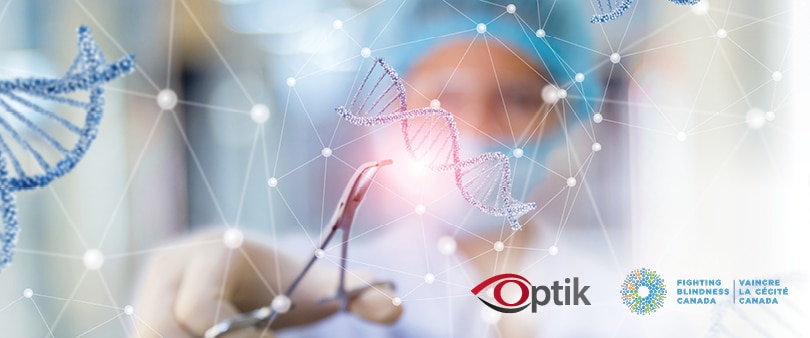Using Gene Therapy to Treat Genetic Eye Disease Aniridia
Tuesday, October 3 2023 | 09 h 04 min | Vision Science
In 2020, Fighting Blindness Canada awarded Dr. Elizabeth Simpson at the University of British Columbia a research grant of $297,000 to support the development of a potential gene therapy for the inherited eye disease, aniridia.
What is Aniridia
Aniridia is an inherited eye disease where the iris is partially or completely absent. Individuals with aniridia usually have low vision from birth and develop glaucoma and cataracts, which can lead to blindness. Most cases are caused by a mutation in the PAX6 gene. While current treatments may slow the progression, there are no cures or treatments.
With Fighting Blindness Canada funding, Dr. Simpson’s team has been developing a minimally invasive gene therapy for aniridia which they are testing in an animal model.
Gene Therapies for Eye Diseases
Most current gene therapies for inherited eye diseases deliver the new gene directly into the eye, often using a subretinal injection, a delicate process. Injecting the gene therapy into the eye, ensures that target cells in the eye receive a sufficient dose while also reducing the amount of gene therapy that reaches other parts of the body, hopefully reducing the potential for side effects.
Dr. Simpson is testing if gene therapy for an eye disease can be delivered without injections into the eye.

Dr. Simpson’s team tested an intravenous injection directly into the bloodstream to deliver the gene therapy. Not only is this less invasive than a subretinal injection, but because PAX6 mutations can impact other organs, a treatment may be able to improve symptoms in multiple parts of the body, including the eye.
Over the course of the research grant, Dr. Simpson’s team produced and tested multiple PAX6 gene therapies in an animal model to identify the optimized approach.
After testing different doses in animal studies, Dr. Simpson was excited to show that an intravenous injection delivering PAX6 gene therapy reached retinal cells and was still present after five months. Importantly, there was no “toxicity” from the treatment.
The team did not see any strong impact on vision after the gene therapy and they think that a greater number of cells will need to receive the gene therapy for improvement to occur. This research will continue and hopefully bring a new gene therapy to a human clinical trial in the future.








